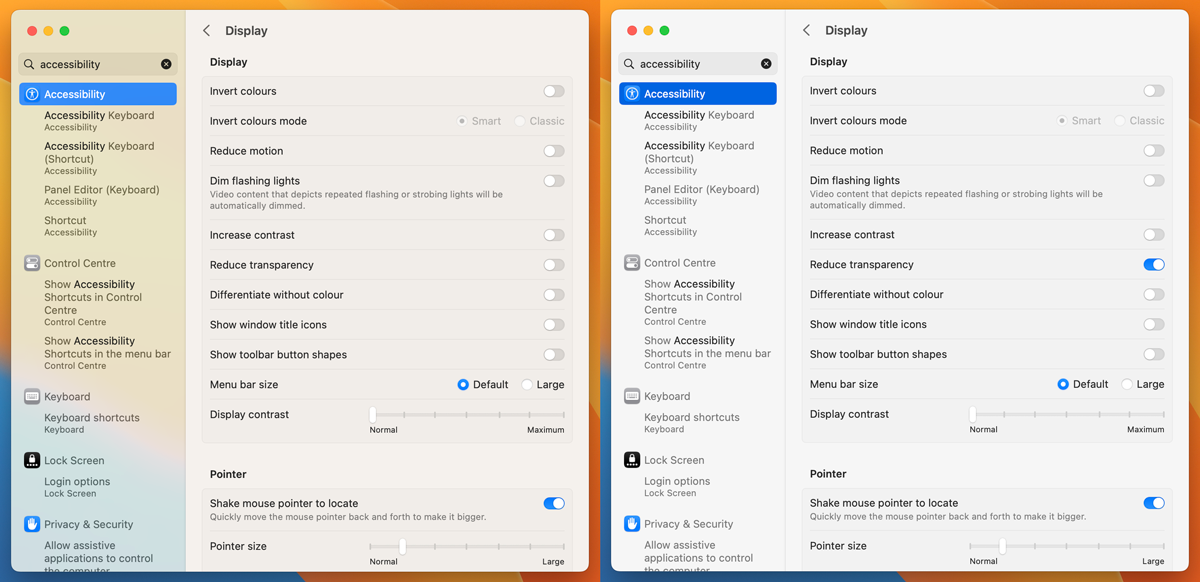This content originally appeared on Manuel Matuzović - Blog and was authored by Manuel Matuzović
Design trends like Glassmorphism use translucent backgrounds to create a specific visual effect, resulting in underlying background colors or elements shimmering through the background of the overlaying element. That may be visually appealing, but it can distract some people and impair legibility.
Operating systems like macOS and Windows offer options to reduce transparency in the operating system.
macOS: System settings - Accessibility - Display - Reduce transparency.
iOS: Settings - Accessibility - Display - Reduce transparency
Window: Settings - Ease of Access - Display - Show transparency in Windows

In CSS, you can query that setting using the prefers-reduced-transparency media feature.
dialog {
background: rgba(255, 255, 255, var(--bg-opacity, 1));
backdrop-filter: blur(5px);
border: 1px solid rgba(255, 255, 255, 0.3);
border-radius: 16px;
box-shadow: 0 4px 30px rgba(0, 0, 0, 0.1);
}
@media(prefers-reduced-transparency: no-preference) {
dialog {
--bg-opacity: 0.2;
}
}
Here's how the dialog looks by default:
Here's how it looks with reduced transparency active:
Currently supported in Chrome, Edge, and Firefox behind a flag.
My blog doesn't support comments yet, but you can reply via blog@matuzo.at.
This content originally appeared on Manuel Matuzović - Blog and was authored by Manuel Matuzović
Manuel Matuzović | Sciencx (2023-11-01T00:00:00+00:00) Day 103: the prefers-reduced-transparency media feature. Retrieved from https://www.scien.cx/2023/11/01/day-103-the-prefers-reduced-transparency-media-feature/
Please log in to upload a file.
There are no updates yet.
Click the Upload button above to add an update.
